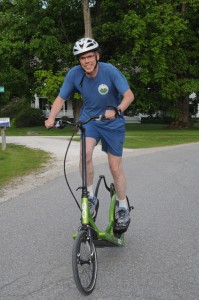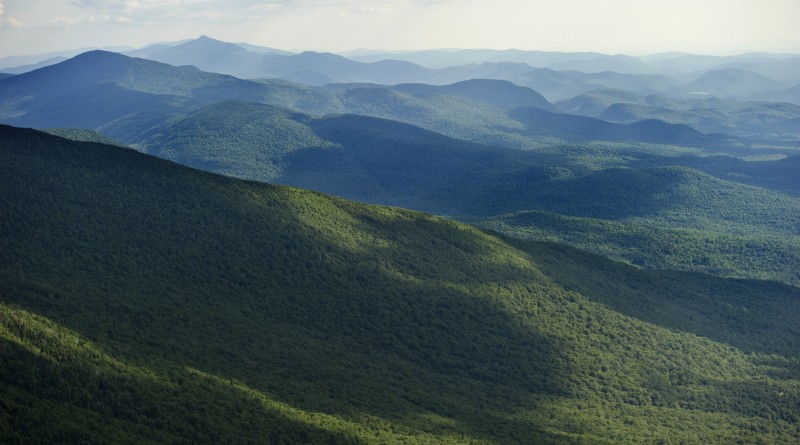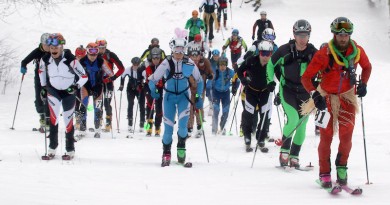Going Elliptical
By Bill McKibben
 It’s rare, by the time you reach your fifties, to feel an entirely new physical sensation—it’s been many decades since we took our first swim and felt the way water pulled against our limbs. We’ve flown on jets so often that we no longer feel the push of acceleration down the runway (and we pull down the window-shade so we can watch the movie—how jaded is that?)
It’s rare, by the time you reach your fifties, to feel an entirely new physical sensation—it’s been many decades since we took our first swim and felt the way water pulled against our limbs. We’ve flown on jets so often that we no longer feel the push of acceleration down the runway (and we pull down the window-shade so we can watch the movie—how jaded is that?)
So, I wasn’t really expecting anything that remarkable the first time I climbed on an Elliptigo bike. It was at the crowded start of May’s New York Five Boro Bike Tour, which my wife had wanted to ride for years.
We’d been planning the ride for nearly 12 months but last fall I was diagnosed with a pair of herniate discs in my neck. They made the bicycling crouch painful and it’s unclear when, if ever, I’ll be back to drop handlebars. Searching for a solution online, I came across the Ellliptigo—which at $2500 seemed an expensive solution. But I could rent it in New York for a hundred bucks a day.
So I decided to try the vaguely insectoid-looking machine for the 40-mile ride—an easy, cheek-by-jowl pedal with 38,000 bicycles on the crowded streets of New York. The Elliptigo was, I’d been assured, easy to ride: just like an elliptical machine from the gym, but with wheels.
But it wasn’t anything like that. Instead it was like…flying. There’s a swoop to it; you seem to be running, but you’re quickly moving twice as fast as a runner can go. The world goes by gigglingly fast, as if you’d taken some benign drug that screwed up your perception of time. And of space, as well. I’ve spent my whole adult life being 6 feet 2 inches, which is fairly high off the ground—but at the top of the pedal stroke on the Elliptigo I was more than 7 feet tall, which meant I was looking out on the world like Wilt or Kareem. In New York I could see miles ahead, over top of all the hunched bicyclists.
The 40 miles passed easy and pain-free, but I’d never had enough open road to really push hard, and the stiffest climb was up the Verrazano Narrows Bridge.
I wanted to try more. Since it was hard to tell if it would translate to the Addison County landscape, with its long windswept valley rides and its classic mountain gap rides, I borrowed one from the California-based company for a week, and put it through its paces in the Greens.
Nicole Blood, the Saratoga-based company rep, packed the 40-pound lime-green loaner in her Honda CRV car (the handlebars and stem remove easily from the rest of the frame) and brought it to Vermont. Blood is a former world-class 5k runner who exemplifies one of the machine’s key user groups: top-notch athletes who need to train through injury, or simply want more miles without the pounding impact of running. “You don’t need to be hurt to use it, though” she said, as we pedaled (there’s no good verb—were we ‘ellipticizing’?) through the covered bridge at Salisbury swamp. Pros like Meb Keflezighi use them to avoid injury as they ramp up training—Meb was on his almost every training day before he won the 2014 Boston Marathon, the first American to do so in a generation.
I got a good Zone 1 workout riding the back roads of Weybridge and Vergennes, moving about the same pace as my wife does on a good road bike. You do catch the headwind because you’re so high—but you also see over the fences and hedgerows; its far more involving than biking, where I find myself staring at the road ahead. (I also felt more visible, which after the spring’s fatalities on Champlain Valley roads didn’t bother me).
Once I mastered the flats I decided to head for the hills. Even though the standard model has just 8 gears, it’s more than a match for the mountains—I climbed over Middlebury gap two days in a row and my legs didn’t feel shot afterwards.
The Elliptigo didn’t feel like a substitute for biking or running. It felt like its own slightly magical motion, efficient and—more important—engaging. I felt like I was walking on air.
Environmental activist and author, Bill McKibben is the founder of the climate action group 350.org and the Schumann Distinguished Scholar in Environmental Studies at Middlebury College. His many books include The End of Nature, Eaarth, Deep Economy and Long Distance, the story of how he trained with Olympic athletes to improve his cross-country skiing. McKibben lives in Ripton, Vt. and frequently rides around Addison County with his wife, Sue Halpern.




